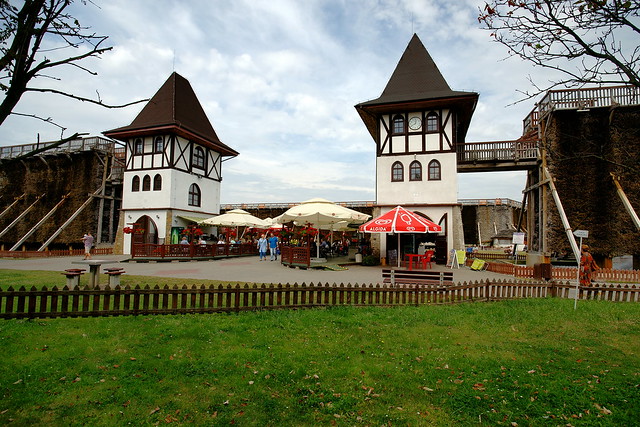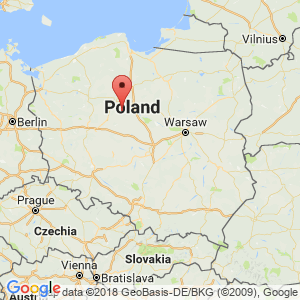Inowrocław
(Short edition)

Entrance to the Graderværket in the spa park in Inowrocław
Distance
Population
76.137 (2009)
Location and history
Inowrocław is located in the Kujawy region, south of the region's main cities: Bydgoszcz and Toruń. The River Noteć has its run just south of the urban area.
The first mention of the town dates from 1185. The settlement had arisen around a large market and near a salt boiler. Commercial rights gained Inowrocław in 1238. After the partition of Poland in 1772, the city belonged to Prussia; in 1919 it returned to Poland
Stanislaw Przybyszewski:
Stanislaw Przybyszewski (born May 7, 1868 in the village of jojewo (south-southeast of Inowrocław) died November 23, 1927 in Jaronty) was a Polish author who wrote both German and Polish.He was one of the first expressionists in literature. He is also considered an important mediator between German and Slavic literature. In 1890’The Scandinavian artists' colony, where Strindberg, Drachmann, Edvard Munch et al. When Strindberg left Berlin in 1893, the circle around Przybyszewski continued. Also in 1893 Przybyszewski married the Norwegian Dagny Juel. At times, the couple resided in Norway. In 1898 Przybyszewski became editor of the Polish-language journal “życie” (Life), which was published in Kraków, which at that time belonged to Austria, and Przybyszewski became the centerpiece of the artist circle “The young Poland”. After the killing of Dagny Juel in 1901, Przybyszewski moved to Warsaw, where in 1905 he married Jadwiga Kasprowicz.
Tourist attractions
Selected attractions:
On the grounds of many wars over time, only a few historical building monuments are preserved for our time:
Church of the Virgin Mary
- Romanesque church building, probably erected at the end of the 12th century.
Saint Nicholas Church
- in the late Gothic style. Originally from the middle of the 13th century, the church was rebuilt in 1431 following the devastation of the Crusaders' attack on the city.
Protected houses
Some preserved old residential buildings can be seen at Ul.Kościuszki and Plac Klasztorny.
Other attractions:
Jan Kasprowicz Museum
- is a regional museum of the western Kujawy region.
The spa town of Inowrocław
- is attached to the spa park, where you also find the grading plant built in 2001.
swimming pools
The town has two swimming pools as well as an outdoor swimming pool.
Dance show
Each year, one of the most recognized modern dance competitions in Poland is held, which concludes with the award of a trophy.
Surrounding Area
The city's surroundings are marked by the river Noteć and the many lakes in the so-called Gniezno Lake landscape.
To the south is not far to the historic town of Kruszwica, already in the 10th and 11th century. was an important fortified urban community.
Accommodation
Other accommodation links:
Inowrocław – in 63 languages, including Danish, Norwegian and Swedish
Other Internet sites and sources
Inowrocław – in 63 languages, including Danish, Norwegian and Swedish
Translated into English by Google Translate. Spangshus.dk accept no liability for any errors or omissions in translation.
Map

Rating
Search
Most used tags
churches (205) Castles (86) Monasteries (79) Town walls (74) Lakes (71) Town halls (67) Rivers (65) Castles1 (62) Mansions (55) Museums (51) Regional museums (38) Town gates (36) Abbey churches (35) Castle ruins (30) Cathedrals (26) Forests (25) Health resorts (24) Mounds (23) Water sports (23) National parks (22)Click for all tags
Denne side er også tilgængelig på dansk. This page and contents is (c) Copyright 2018- www.spangshus.dk. Based on Inviator software by ISCA Software